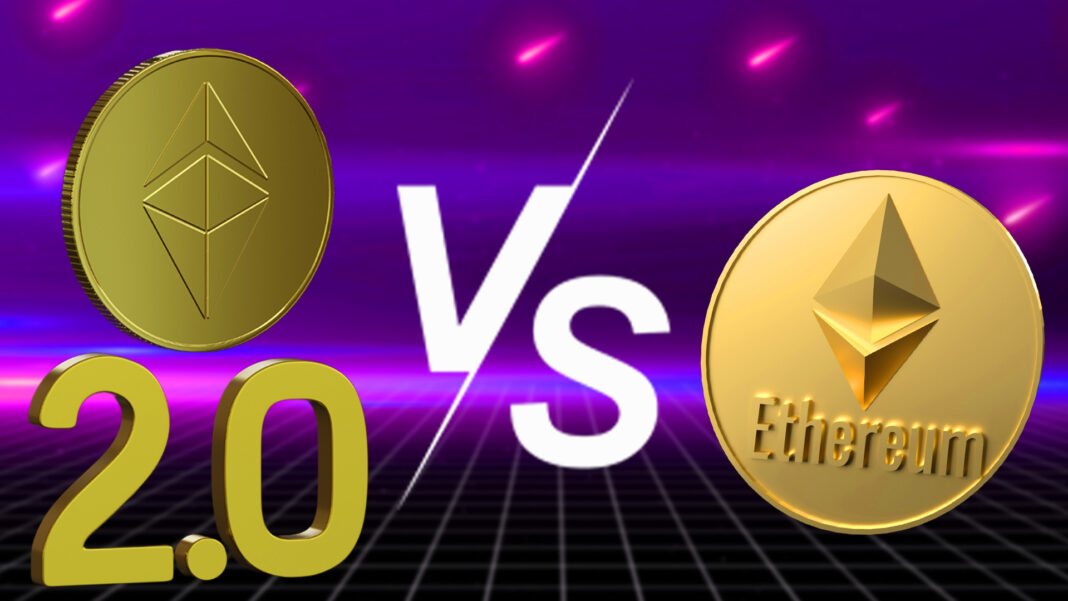- Ethereum is a blockchain network that helps to build decentralized apps.
- Ethereum 2.0 is a series of updates that happened in the Ethereum network or mainnet.
As the adoption of blockchain systems has increased, more technologies are making their way into the digital world. As a result, we found that many blockchain systems have their own chains and tokens. Such one blockchain system is the Ethereum mainnet. It is launched with the purpose of scalability and helps other blockchain systems to build decentralized apps on top of it. But, after its launch in 2015, the platform has decided to update its whole network.
So, as a series of upgrades happened in the Ethereum network, converting Ethereum into Ethereum 2.0. But, we can’t say that it totally becomes Ethereum 2.0 as the updates are work-in-progress and some phases are left. But, a question arises in the minds of the people is there any difference between both of them? Well, to answer this question we should know they really are.
Ethereum – A Decentralized Blockchain System
Ethereum is a decentralized blockchain system or network helping users or developers to build decentralized apps on top of it. The platform has its own native cryptocurrency called Ether (ETH). It is the first blockchain system that utilizes the full efficiency of blockchain systems.
Launched on July 30, 2015 by Vitalik Buterin it is the first blockchain technology that has smart contracts embedded into it. Smart contracts are contracts that get executed directly if the predetermined condition is met. It is the main technology behind decentralized applications.
Ethereum 2.0 – A Series of Updates
Ethereum 2.0 is a series of upgrades aiming to increase the efficiency, scalability, and security of the Ethereum mainnet. This will help the network to achieve more transaction speed, reduce network fees, and efficiently execute smart contracts. It will help in achieving the transparency and scalability for which the network is originally built.
The upgrade will take place in phases. The first phase introduces the beacon chain, a proof-of-stake blockchain, which was implemented on December 1, 2020. Its main purpose is to coordinate with the Ethereum mainnet and act as a consensus layer.
The second phase will include the Merge which includes the merger of the beacon chain and Ethereum Mainnet. This merger was completed on 15th September 2022. The Merge’s main purpose is to convert the network’s Proof-of-Work (PoW) mechanism into Proof-of-Stake (PoS) mechanism. PoW and PoS are the consensus models which agree on transactions happening in the network.
The third phase involves the process of Sharding, dividing the Ethereum mainnet into 64 smaller shards or chains to increase transaction efficiency and speed. Currently, Etherum can handle 15 transactions per second, but after this upgrade, it will be able to handle 100,000 transactions per second. However, this upgrade is scheduled for 2024.
This is all about Ethereum and Ethereum 2.0. Let’s move on to the differences between both of them.
Ethereum V/s Ethereum 2.0
The difference between the two is basically on the basis of:
1. Scalability
Scalability is the major difference between the two versions. While Ethereum is capable of handling 15 transactions per second Ethereum 2.0 is capable of processing 100,000 transactions per second. It will increase the overall scalability of the network.
2. Beacon Chain
Ethereum 2.0 has the beacon chain on the network which acts as a consensus layer for the network while Ethereum doesn’t have any such chain. In the Ethereum network, mainnet itself works as an execution layer in the whole process.
3. Energy Efficient
Ethereum 2.0 is more energy efficient, saving up to 99.95% of energy compared to the previous Ethereum network.
4. Consensus Models
Both of them have different consensus models. While Ethereum uses a Proof-of-Work mechanism for validating the nodes, Ethereum 2.0 adopts the Proof-of-Stake mechanism to validate the nodes.
Concluding Thoughts
Ethereum 2.0 is a series of upgrades happening in the Ethereum network to increase efficiency, scalability, transparency, and security. However, the third phase of the upgrade is yet to be released in 2024.




